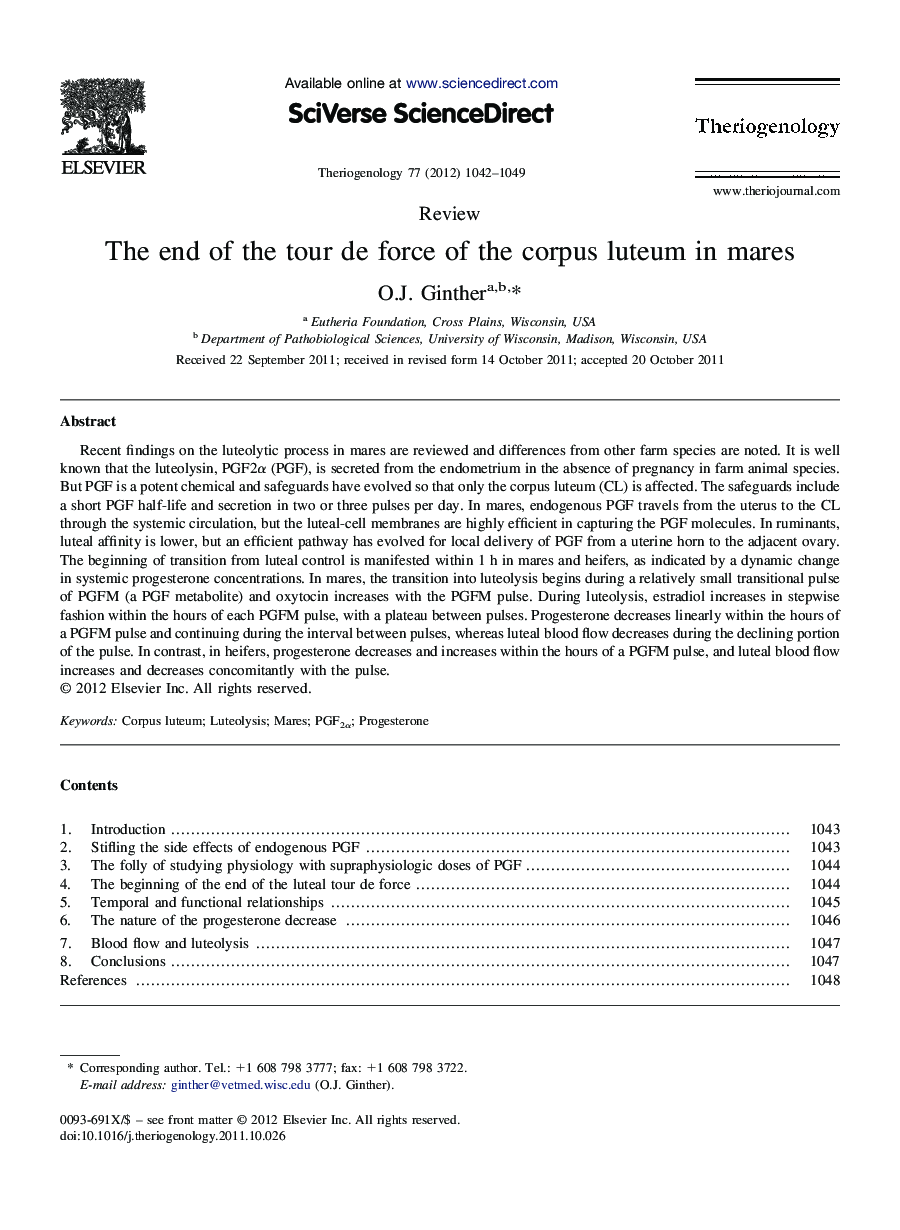| Article ID | Journal | Published Year | Pages | File Type |
|---|---|---|---|---|
| 2095569 | Theriogenology | 2012 | 8 Pages |
Recent findings on the luteolytic process in mares are reviewed and differences from other farm species are noted. It is well known that the luteolysin, PGF2α (PGF), is secreted from the endometrium in the absence of pregnancy in farm animal species. But PGF is a potent chemical and safeguards have evolved so that only the corpus luteum (CL) is affected. The safeguards include a short PGF half-life and secretion in two or three pulses per day. In mares, endogenous PGF travels from the uterus to the CL through the systemic circulation, but the luteal-cell membranes are highly efficient in capturing the PGF molecules. In ruminants, luteal affinity is lower, but an efficient pathway has evolved for local delivery of PGF from a uterine horn to the adjacent ovary. The beginning of transition from luteal control is manifested within 1 h in mares and heifers, as indicated by a dynamic change in systemic progesterone concentrations. In mares, the transition into luteolysis begins during a relatively small transitional pulse of PGFM (a PGF metabolite) and oxytocin increases with the PGFM pulse. During luteolysis, estradiol increases in stepwise fashion within the hours of each PGFM pulse, with a plateau between pulses. Progesterone decreases linearly within the hours of a PGFM pulse and continuing during the interval between pulses, whereas luteal blood flow decreases during the declining portion of the pulse. In contrast, in heifers, progesterone decreases and increases within the hours of a PGFM pulse, and luteal blood flow increases and decreases concomitantly with the pulse.
